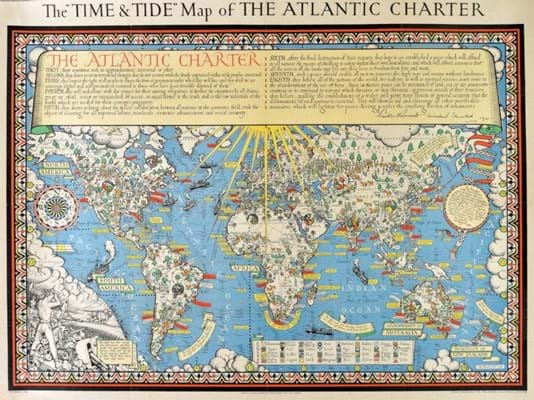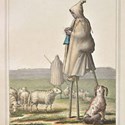The runaway success of the March 7 South Cerney sale was the incomplete copy of Robert Morden’s little county atlas of England and Wales with playing card maps mentioned in last week’s reports (ATG No 2335).
The far higher than expected winning bid of £34,000 was produced by competition between two determined collectors bidding on something of undoubted, and presumably increasing rarity.
Having sold an earlier (c.1780) and complete copy for £12,500 in 2009, the saleroom was nonetheless surprised by the result.
Forest and city
Other cartographic highlights of this auction included, at £3700, a scarce 1789 Plan of …the New Forest, a large-scale map on 10, mostly coloured engraved sheets produced by William Faden, and an example of the inventive mapmaking talents of MacDonald Gill.
Gill, a graphic designer, artist and architect, was the younger brother of the much more famous, indeed infamous Eric Gill.
His cartographic creations included a famous and humorous Wonderground Map of London Town of 1914, a map said to have restored the fortunes of the London Underground network.
The Gill map sold for £3400 by Dominic Winter in this sale, however, was a much later creation, the ‘Time and Tide’ Map of the Atlantic Charter. A coloured photolitho map of 1943, it never enjoyed wide circulation and is now one of the scarcer of Gill’s pictorial maps.
A folding engraved plan of Constantinople, together with 22 portraits of Turkish emperors, illustrate a 1734-35, first English edition of Demetrius Cantemir’s History of the Growth and Decay of the Othman Empire that sold for £5800.
Madras journal
Compiled in 1761 by Richard Rose, a lieutenant in the 96th Regiment of Foot, a finely illustrated manuscript account in the form of 26 letters gathered under the title ‘Journal of a Voyage to Madras…’ made £4000.
Sold at what is probably a record £2600 was a 1730 first of A Short Treatise of Artificial Stone… by Richard Holt, who, along with his partner, Thomas Ripley, had patented this ‘burnt clay’ process in 1722.
A 1715 Holy Bible from John Baskett’s Oxford press that once belonged to the poet Thomas Gray sold at £6600.
The sale’s other literary high spots included, at £7000, an 1816 first of Jane Austen’s Emma in near contemporary half calf binding, but with the half-titles discarded.
Two Chiswick Press limited editions in original wrappers of works by Robert Graves, both bearing short presentation inscriptions, sold at £1600 and £1150.
These were, respectively, Goliath and David of 1916 and Treasure Box of 1919.


















